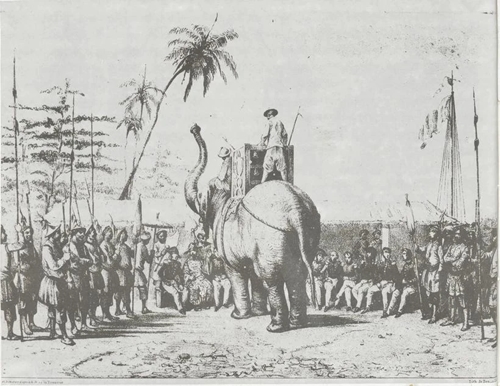Entitled “Bang giao trieu Nguyen: Giua lan gio Dong-Tay” (Nguyen Dynasty’s diplomacy between the East and the West), the event is jointly organized by the National Archives Center under the State Records and Archives Department.
The exhibition introduces to public for the first time hundreds of unique documents on the country’s diplomatic activities in the first over 50 years of independence under the Nguyen Dynasty between 1802 and 1858.
    |
 |
|
A Nguyen Dynasty document to be displayed at the exhibition |
It consists of two parts with the first part shows that Kings of the Nguyen Dynasty from Gia Long to Tu Duc in their relations with Western countries, mainly U.K., France, and the U.S. consistently implemented a closed-door policy." However, the dynasty did not completely "cut off" relations with the West. The Nguyen kings dispatched delegations to buy essential goods, guns and ammunition, learn about science and technology of other countries. Besides, Western ships also received support and reception from the Nguyen Dynasty many times.
Meanwhile, the second part reflects that the Nguyen Dynasty prioritized developing relations with Eastern countries such as Lanxang (now Laos) and Siam (now Thailand), especially with neighboring China.
The exhibition is expected to provide visitors with useful information, new perspectives and gain further insights into the country’s diplomatic activities under the Nguyen Dynasty.
The Nguyen Dynasty, which started in 1802 and ended in 1945, was the last period feudal rule in Vietnamese history, including two periods: the
independent period (1802-1883) and French colonial period (1883-1945). During the independent period, the Nguyen Dynasty developed many policies to strengthen and develop the country.
Source: VNA